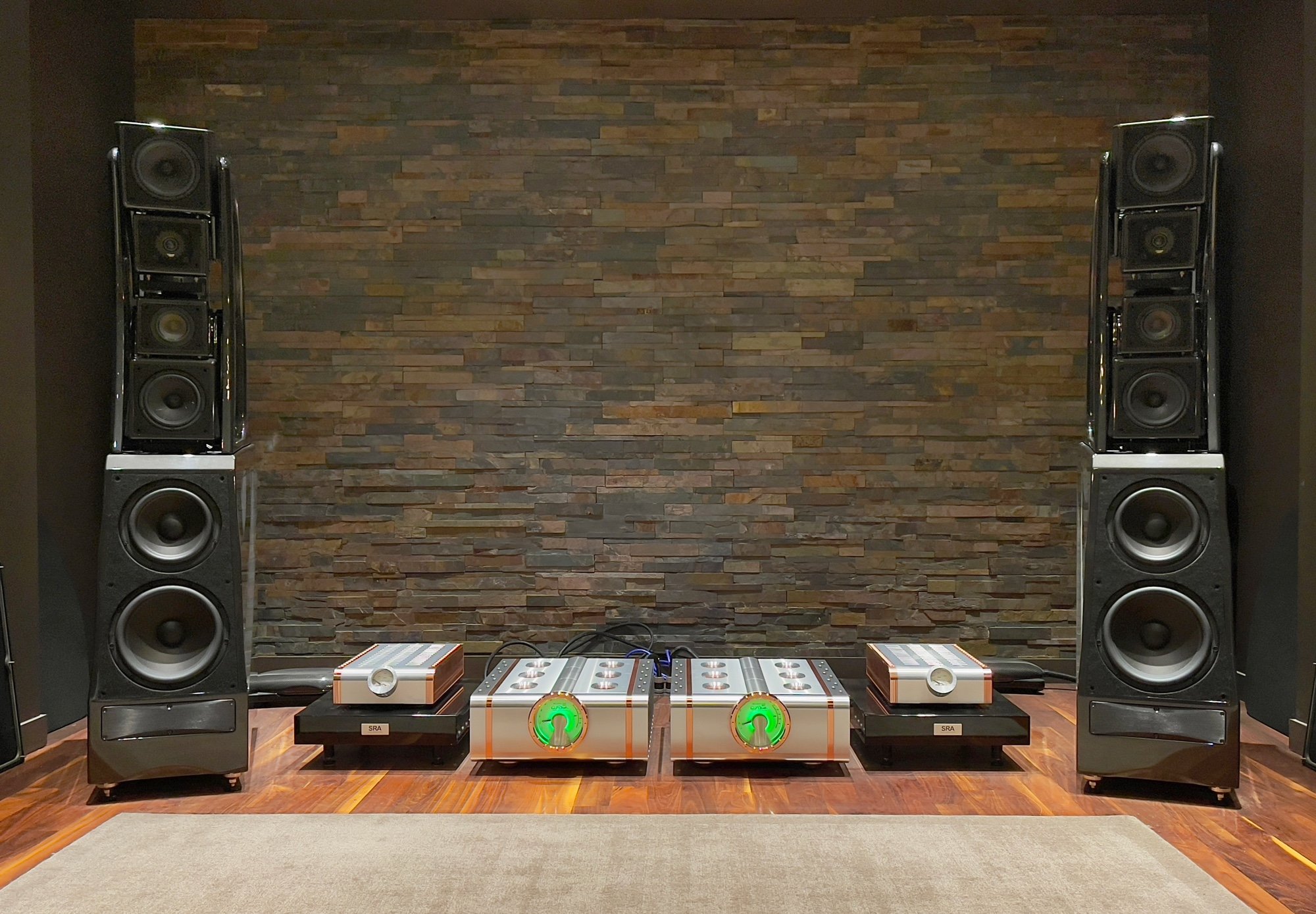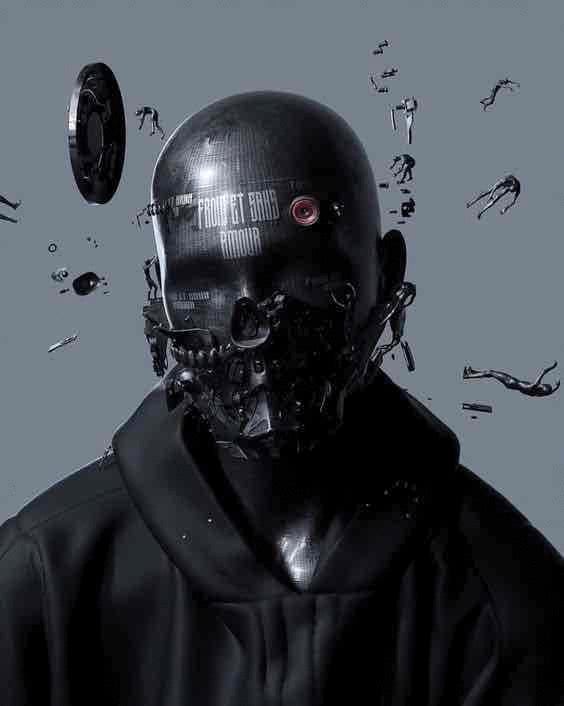
matthewb
@matthewb
here is the story of the most elaborate and expensive hi-fi system that @brileigh and I have ever heard:we met this hi-fi dealer—let’s call him Larry—when visiting nyc after I inquired about a particular brand of electronics that only they and two other dealers in the U.S. happen to carry (Spectral Audio). more about Spectral another time, though.we were brought to a smaller room than this one and another staff member set up our modest demo of a CD player, preamplifier, stereo amplifier, and floorstanding speakers. after about 30min of listening, Larry burst into the room with his walker clanking loudly. he had recently had surgery on his leg or foot, and he joked that he was considering bringing a mattress to the hi-fi showroom so that he could sleep here instead of commuting.








209
David T Phung ⚛️⚡️🚀
@davidtphung
@fridaysatthepark
Rafaello
@rafaello12
Good read
Cartesse
@cartesse.eth
Of You’re in Paris check Listener ;)
Leo
@leohenkels
This thread rules - u tell a good story
0xZara.eth🎩
@0xzara.eth
Larry is a great hi-fi dealer
https://youtu.be/La3U41b0WSU?si=TiJFYnUYuA_mJdMd
Ramsey 🎩🤝
@ramsey
Thank you for that Matthew, the way you describe it, I could picture myself there, enjoying the experience, though I am not a hifi kind of guy.
I love listening/reading up on experience of people that are highly "into" something. And you have a way with words...
Great stuff

Trigs
@trigs
I would probably cry. Unreal experience!
D-wayñe 🎩🕴
@drrrner.eth
Larry. Stand up guy
we sat around talking for an hour or two. dealers like to size you up and figure out what you’re interested in, what you can afford, and what your goals are. in other words, why are you here?at that point in our hi-fi journey, we didn’t have all of the answers yet. in fact, it was quite shocking to them that we didn’t even bring CDs to the demo. apparently this was common practice.luckily, though, I have a pretty strong command of hi-fi lingo and know most of the popular brands/products off-hand. so, we passed the initial test and stayed for the rest of the day to listen.the system we listened to in that smaller room consisted of Wilson Watt Puppy 2024 loudspeakers, a Spectral DMA-300SV stereo amp, and a Spectral SDR-4000SV CD player (not shown). on the center racks you can also see Spectral DMA-500SV monoblock amps and a D’Agostino Momentum S250 stereo amp.at the end of our day, Larry asked: “So… you want to come back tomorrow? Everything is set up anyway, might as well.”
13
No replies to this section yet.
we happily agreed and came back at 11am the next day on a rainy saturday morning. we continued to listen to the same room and the same components, digging through their unorganized collection of CDs in canvas shopping bags that were donated by a client.towards the end of the afternoon, Larry mentioned the room next door in passing: “Next door in the Chronosonic room we’ve got this component made by…” to which I promptly blurted out, “…you have WHAT next door???”sensing that I was like a kid in a candy shop with dilated pupils, Larry brought us next door to one of the most absurd collections of high-end gear I’ve ever seen. it would be genuinely difficult to spend more money on a single two-channel stereo system (but you probably could).
9
No replies to this section yet.
Wilson Audio is an american speaker company that was founded by David and Sheryl Lee Wilson in novato, california in 1974. since 1991, they’ve been building their speakers in provo, utah.the speakers you see here are Wilson Chronosonic XVX, the largest floorstanding speaker they make. a pair weighs ~ 1370lb (622kg) and will run you ~ $370-400k USD depending on the paint finish.the Chronosonics are the dark, Ridley Scott inspired fantasy of an obsessive engineer trying to extract an unnatural amount of performance from a cone-based ported loudspeaker. it’s a speaker that shouldn’t exist, but does.one of Wilson’s core design philosophies is minimizing cabinet resonances, so the XVX has a dedicated cabinet for nearly every individual speaker driver to ensure that one does not interact with the other.the drivers are as follows: 1x 12.5” (woofer), 1x 10.5” (woofer), 2x 7” (lower midrange), 1x 4” (upper midrange), 1x 1” (front-firing tweeter), and 1x 1” (rear/up-firing tweeter).
9
No replies to this section yet.
that’s a damn lot of drivers for a single speaker. keep in mind that for every driver added, you need to design a crossover that splits the frequencies smoothly between that driver and the others while remaining coherent. one driver can’t stick out vs. the others, which is much easier said than done.and if somehow the Chronosonics weren’t already crazy enough for you, the partnering electronics made by Dan D’Agostino should do the trick. the amplifiers on the floor are Relentless 800 monoblocks, weighing in at ~ 640lb (290kg) and ~$195k USD for the pair. the three-box preamplifier is from the same series, weighing 132lb (60kg) and costing ~ $150k USD.the gaudy, steampunk inspired glowing green VU meters dominate the visual signature of these components but the real star of the show is the casework: aircraft-grade billet aluminum, not a single visible screw, and pure copper heatsinks for optimal thermal conductivity.in other words, big amp = lots of heat = big heatsink = big case.

14
No replies to this section yet.
all in all, between the loudspeakers ($370-400k), amps ($195k), preamp ($150k), streamer/DAC ($142k), and cables ($130k), this system adds up to around $1M USD. if you include power conditioning, racks, and other details, even a little more.so, after all of that, how did it sound?hyper-detailed. gobs and gobs of detail flying at you from every direction. every little minuscule sound in the recording: a singer’s lips, fingers on a fretboard, piano pedals. Chronosonics are known as some of the best loudspeakers in the world for detail retrieval and I would concur with that assessment.the other uncanny characteristic of this system is its ability to portray the ambience of the original recording. so, rather than hearing a mixed track like a flat painted mural, you can hear the space around the performers and your mind/ear understands the spatial relationships between them.
10
No replies to this section yet.
was this my favourite high-end system from those I’ve ever heard? not a chance.a bit like the AC being cranked way too high (which coincidentally it was), this Chronosonic system was too cool and analytical for my taste. imo it was missing a healthy dose of harmonic richness, tonal density, and euphony to help round off the edges.ultimately I didn’t feel emotionally connected to the music and this is way more important to me than technical characteristics like detail retrieval. Larry gave us a 45min presentation about how the system could differentiate between different mic placements during recording. he was correct, it certainly could, but this isn’t the type of thing that appeals to me as a former musician and avid listener.simply put, all of the technical concerns are in service of the music. and I believe there’s a lesson in there.
19
No replies to this section yet.

